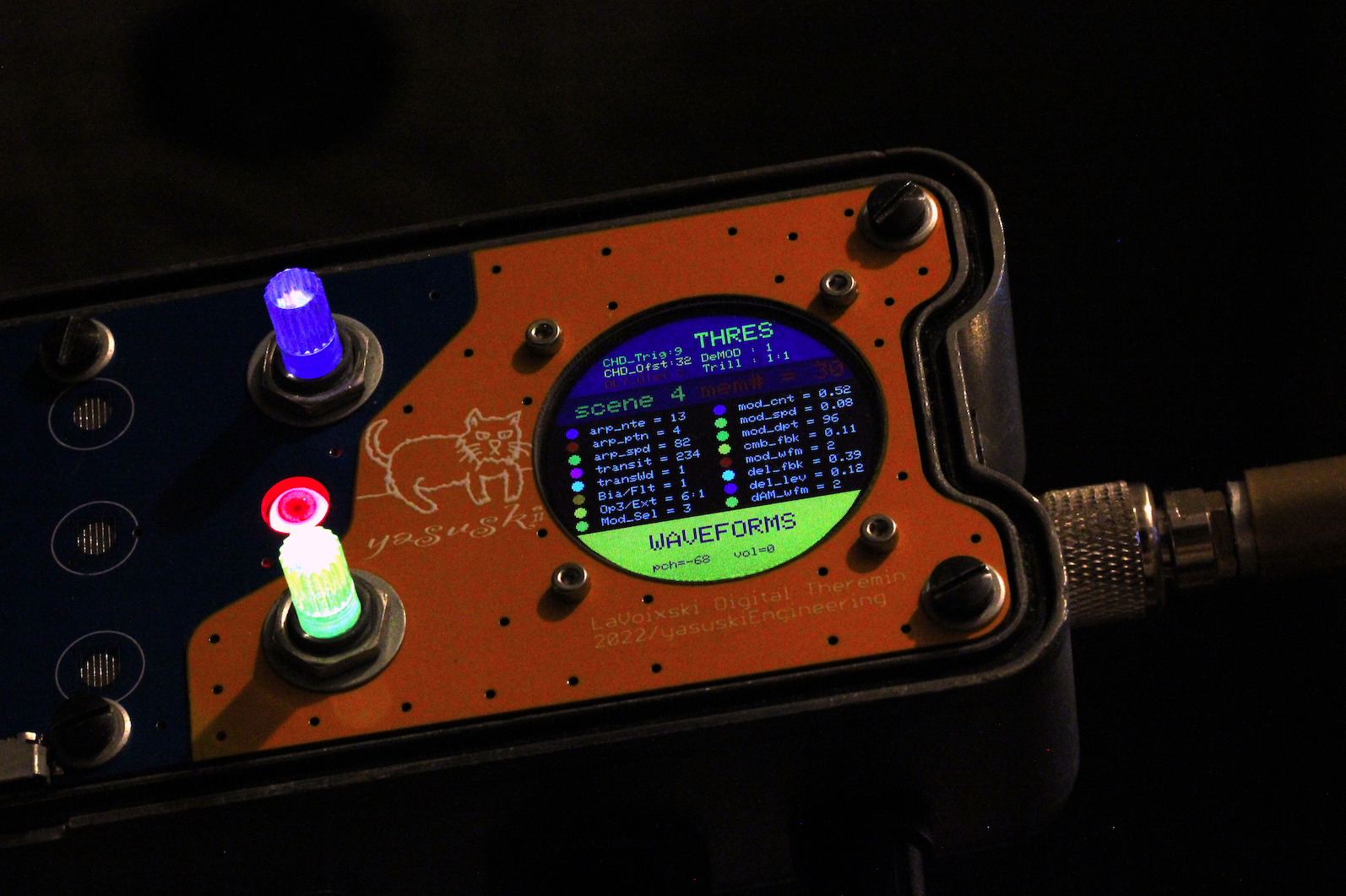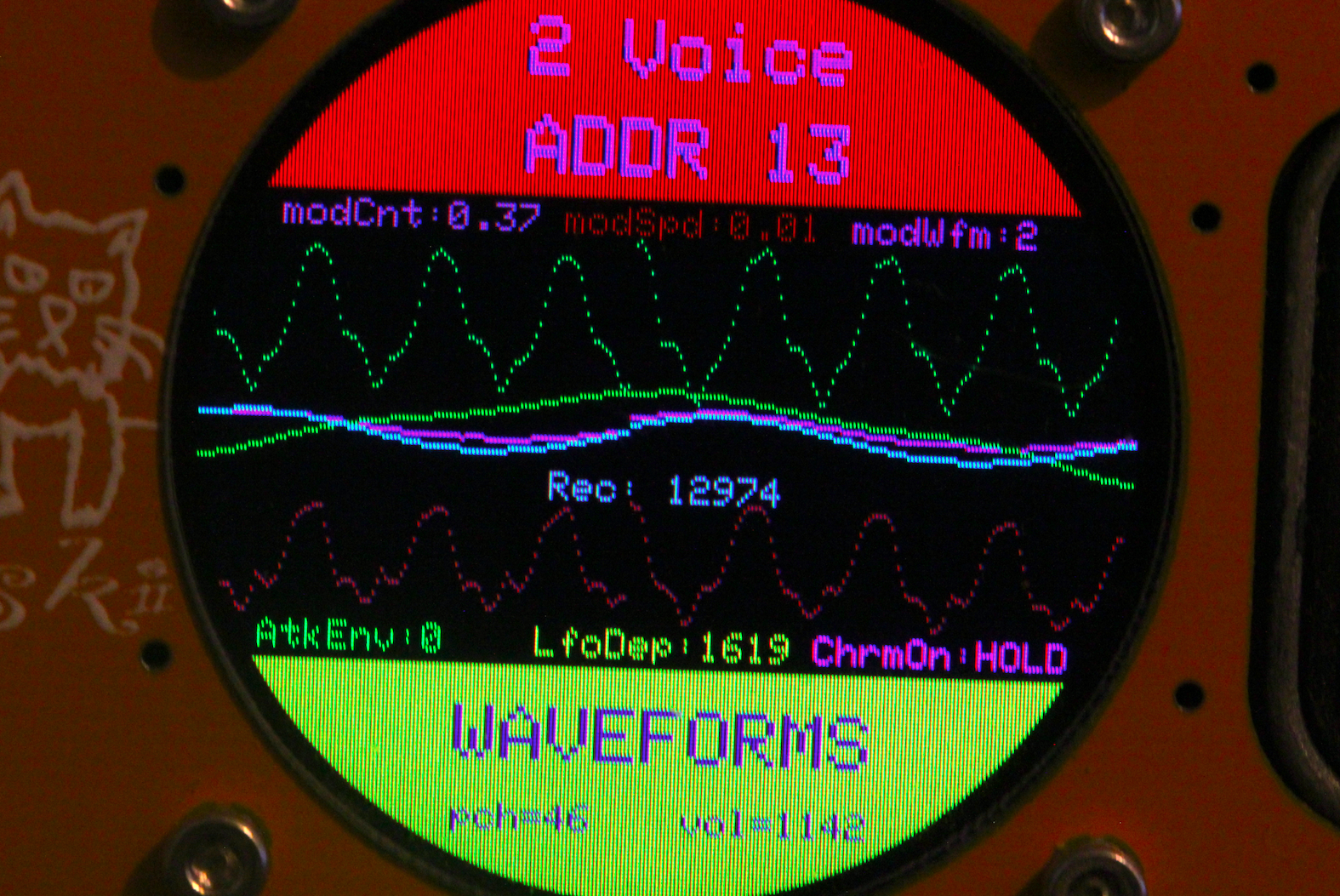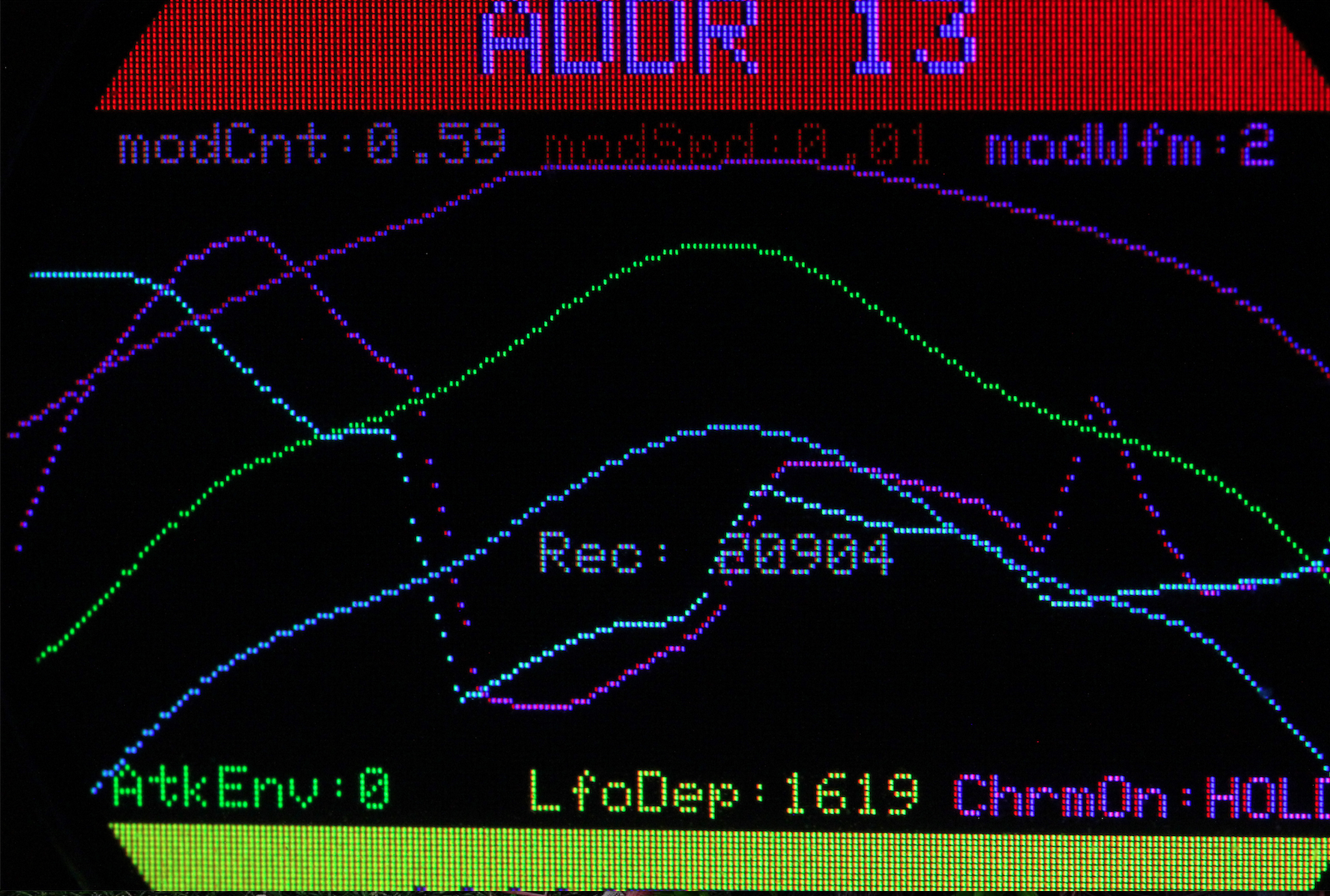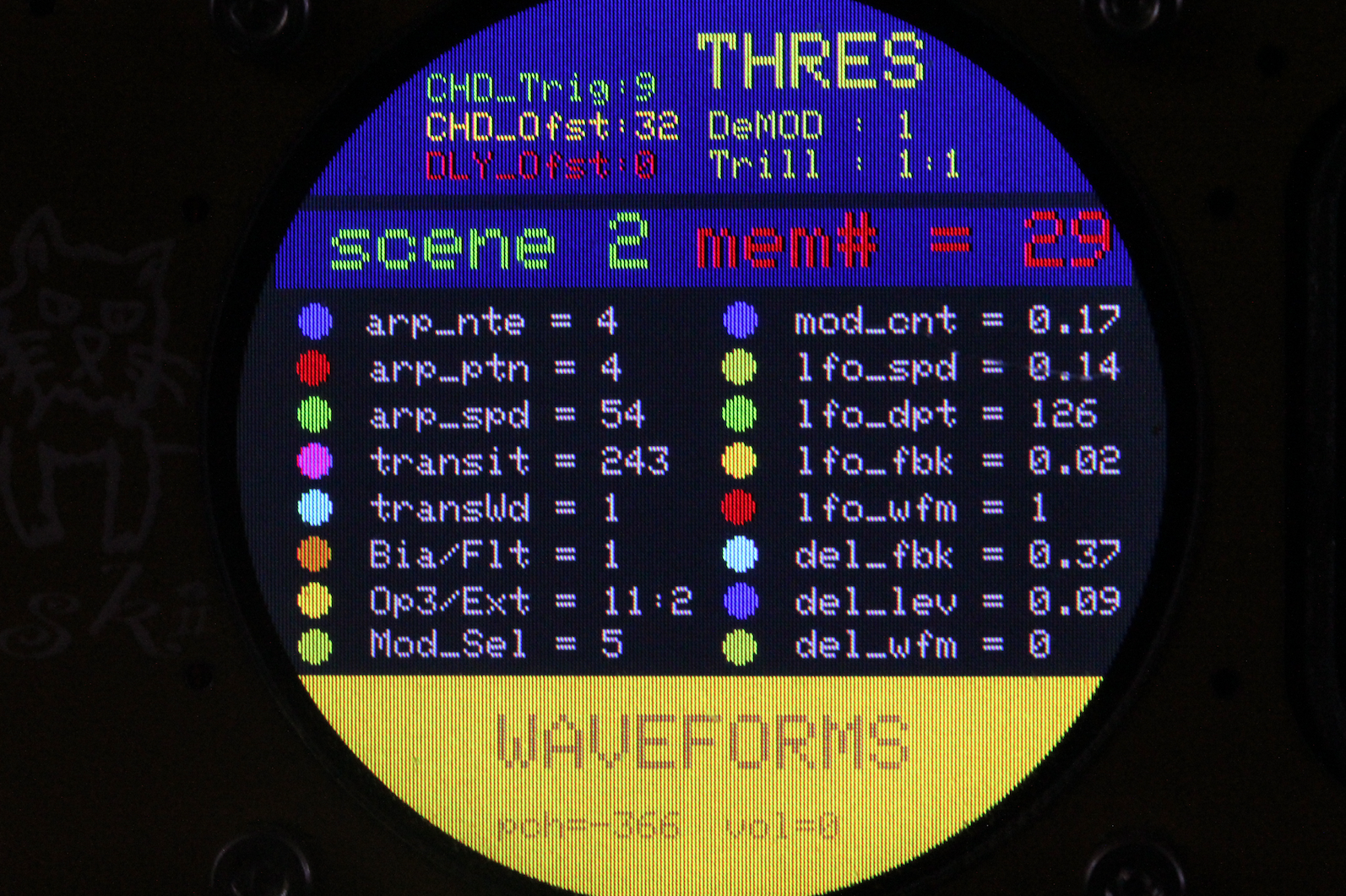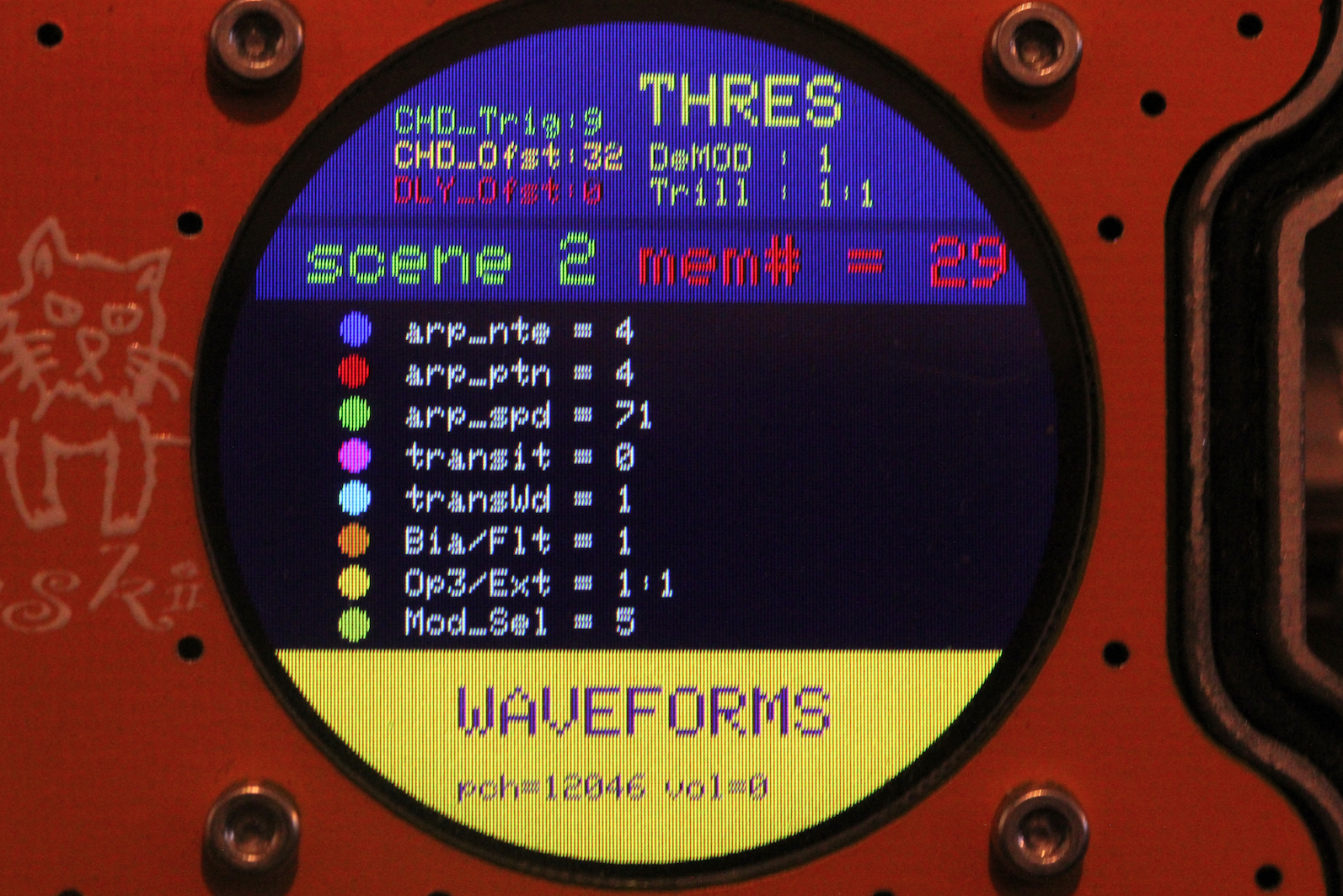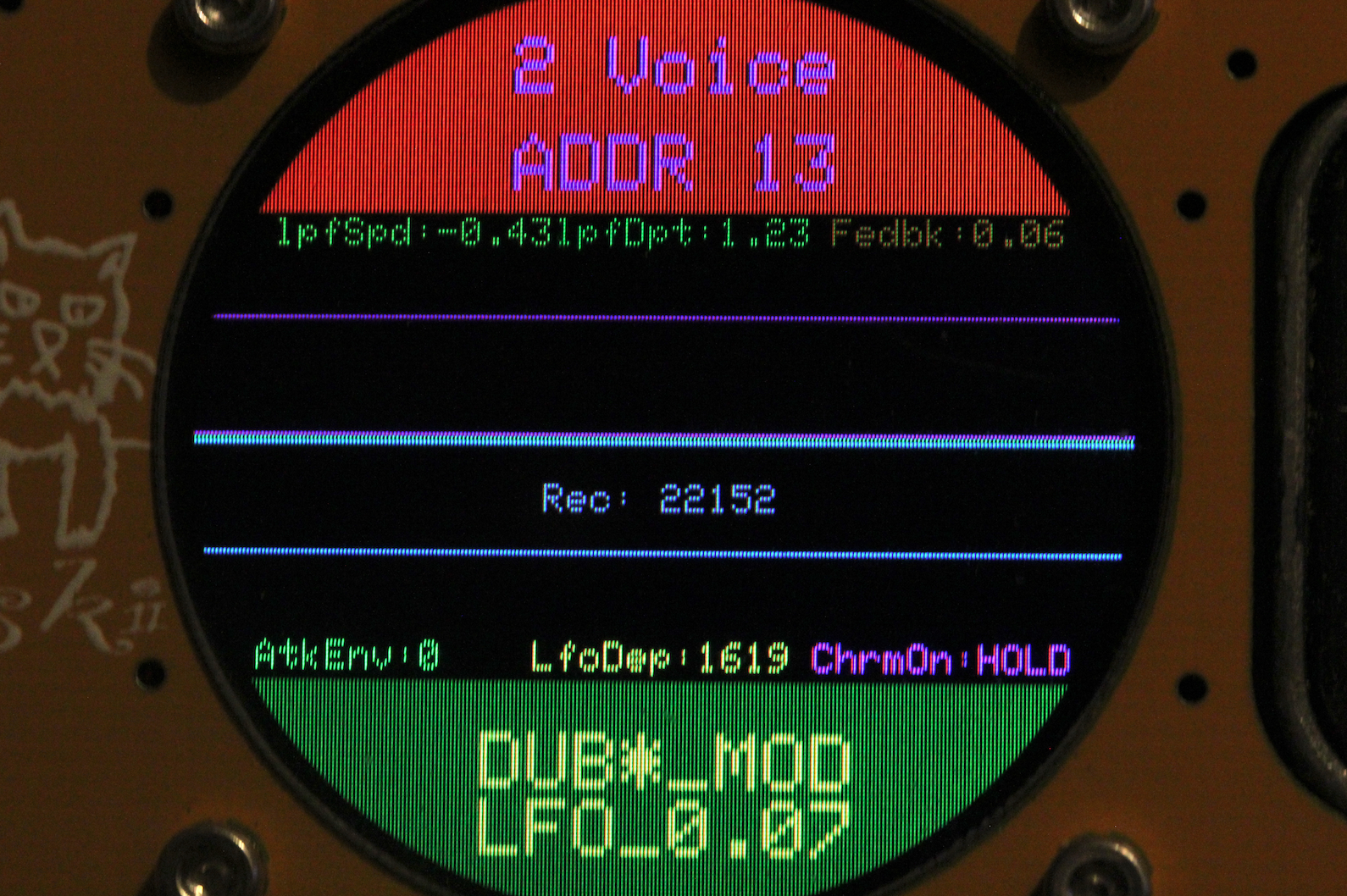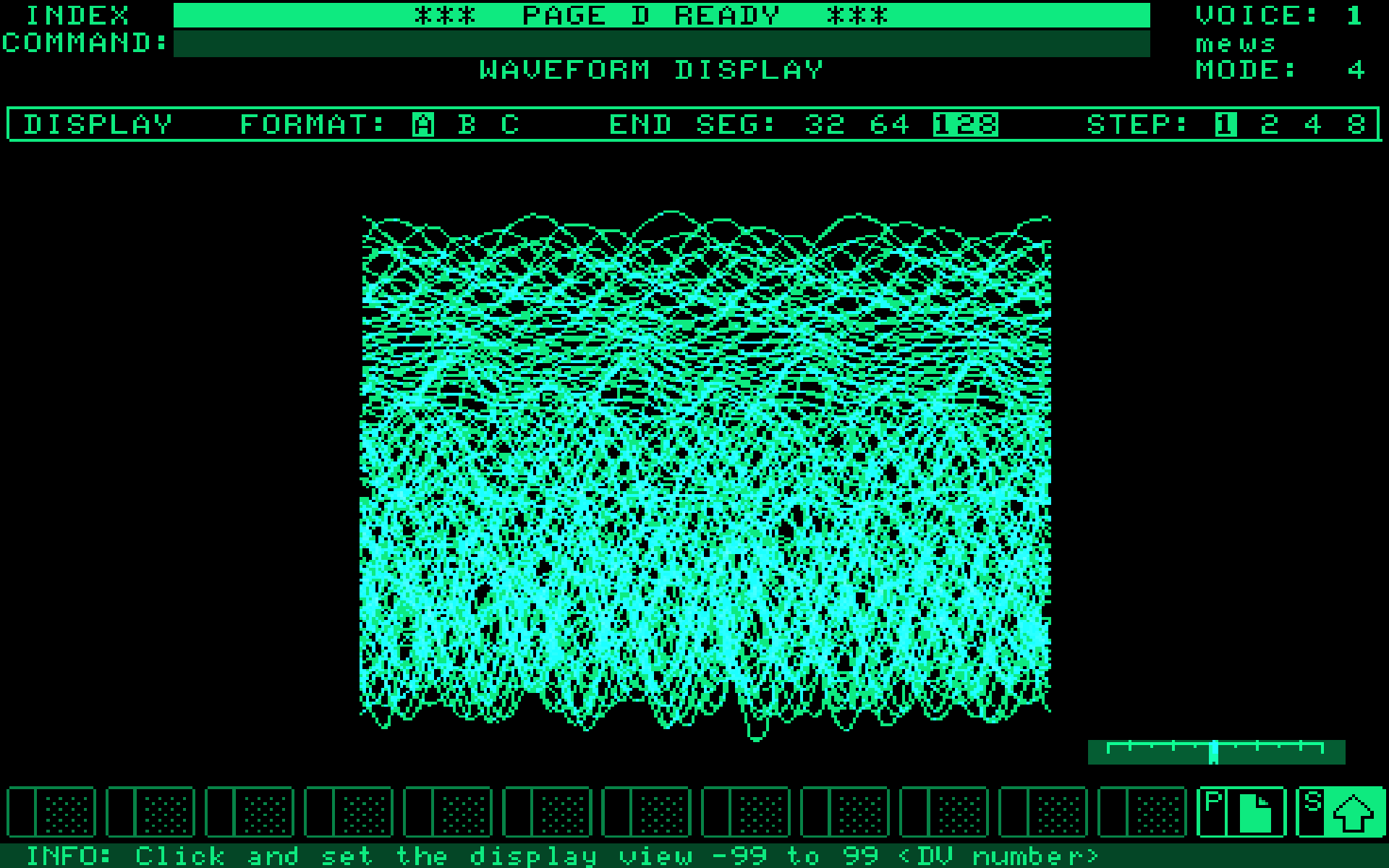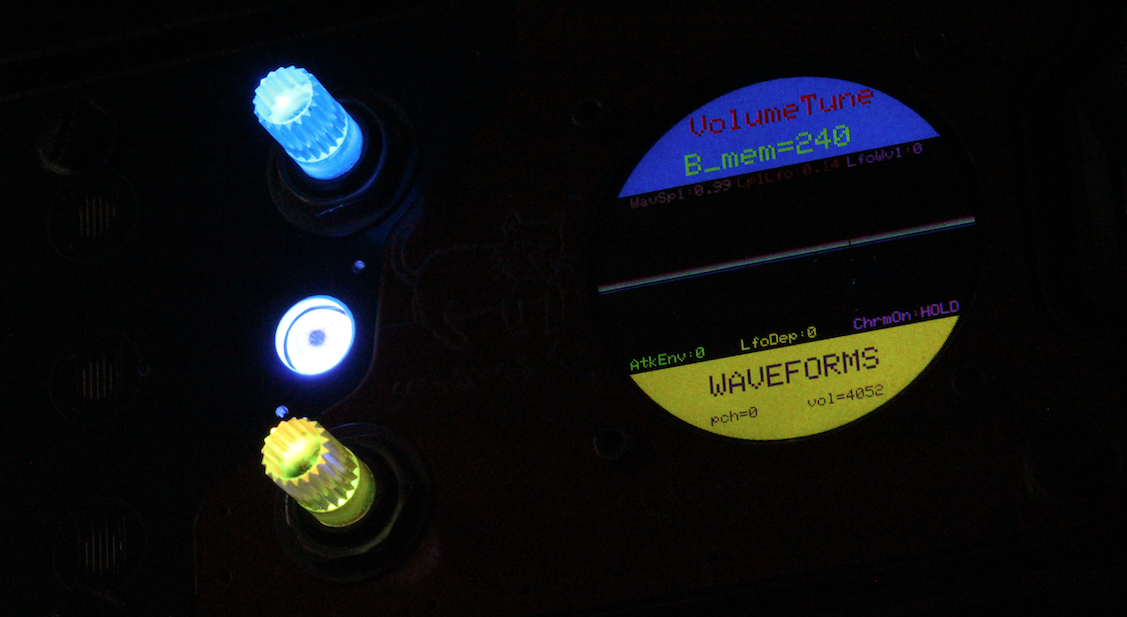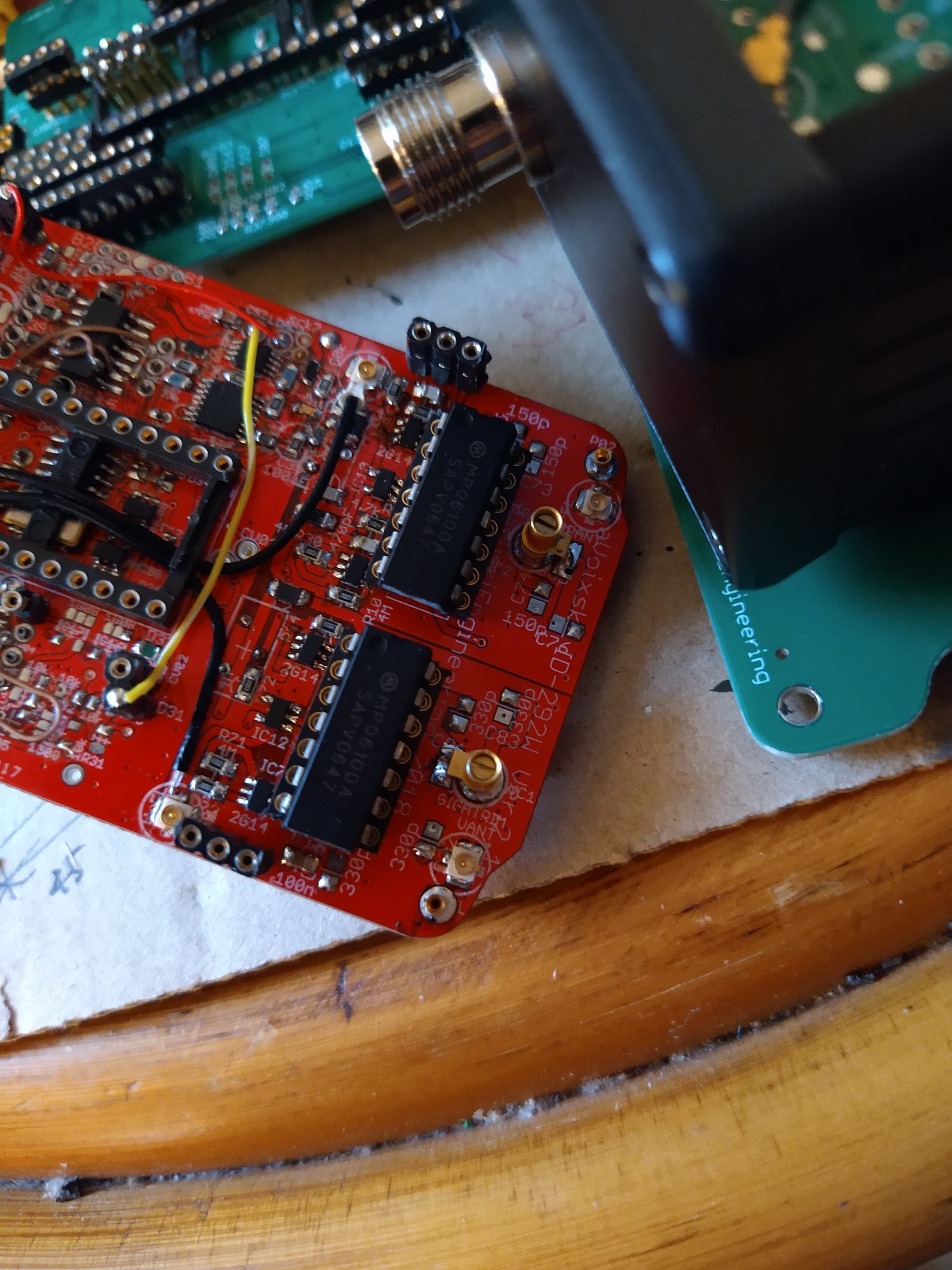The i2c is received by ESP32S3, and the output is output to the main body of the instrument via ESP-NOW. An illuminated push-switch was installed, but it took a lot of time and effort to drill the holes in the stainless steel. The touch sensor and its control board will be mounted bare on the
Reassigning the delay line outputs
When the theremin delay signal that had been allocated to outputs #1/2ch is changed to outputs #3/4ch, the separation and intelligibility of the sound image are dramatically improved, and the Transition becomes more effective. Similarly, the Looper’s Delay signal, which had been allocated to #3/4ch, is distributed to #1/2ch. The results are generally good, but
When the theremin delay signal that had been allocated to outputs #1/2ch is changed to outputs #3/4ch, the separation and intelligibility of the sound image are dramatically improved, and the Transition becomes more effective. Similarly, the Looper’s Delay signal, which had been allocated to #3/4ch, is distributed to #1/2ch. The results are generally good, but
LPF/CombFilter recordings with deep modulation applied.
LPF/CombFilter recordings with deep modulation applied. The Cut Off Frequency of the LPF in the feedback circuit of the CombFilter and the mixing level of the effect were optimized. Perhaps due to the interpolation circuit, the balance setting of 1:1 between the original sound and CombFilter seemed less effective, so the ratio was initially set
LPF/CombFilter recordings with deep modulation applied. The Cut Off Frequency of the LPF in the feedback circuit of the CombFilter and the mixing level of the effect were optimized. Perhaps due to the interpolation circuit, the balance setting of 1:1 between the original sound and CombFilter seemed less effective, so the ratio was initially set
A major error of “mishandling of global variables” placed in the LPF
A major error of “mishandling of global variables” placed in the LPF was discovered and corrected in the relevant section. The variable that buffers the audio in the code that builds the LPF was shared among the outputs of Wavetable, resulting in a near-monaural sound output configuration, but the problem was solved by adding a
A major error of “mishandling of global variables” placed in the LPF was discovered and corrected in the relevant section. The variable that buffers the audio in the code that builds the LPF was shared among the outputs of Wavetable, resulting in a near-monaural sound output configuration, but the problem was solved by adding a
A function to check various settings for each SceneMemory
is implemented in mode2 = page# 9.
is implemented in mode2 = page# 9.
Adding “Depth” to LFO parameters
After adding “Depth” to Modulator’s parameters, I put together the display of parameters related to LFO on one page. I came up with the idea of linking the assignment of the Depth setting parameter in the Modulator to the DelayTimeRange parameter in the 9th item of mode4. The LCD display has Rate/Depth/Feedback in place. The
After adding “Depth” to Modulator’s parameters, I put together the display of parameters related to LFO on one page. I came up with the idea of linking the assignment of the Depth setting parameter in the Modulator to the DelayTimeRange parameter in the 9th item of mode4. The LCD display has Rate/Depth/Feedback in place. The
Driving QasarBeach via USB_MIDI from Type: id-292
QasarBeach is a Fairlight CMI emulator running on the Mac OSX.
QasarBeach is a Fairlight CMI emulator running on the Mac OSX.
LaVoixski Type: id-292
The id-292 is the Vintage US Army Indicator Channel Alignment Military Walkie-Talkie “AN/PRC-6”. This is the first stable version with LCD display running on the CortexM7.
The id-292 is the Vintage US Army Indicator Channel Alignment Military Walkie-Talkie “AN/PRC-6”. This is the first stable version with LCD display running on the CortexM7.

